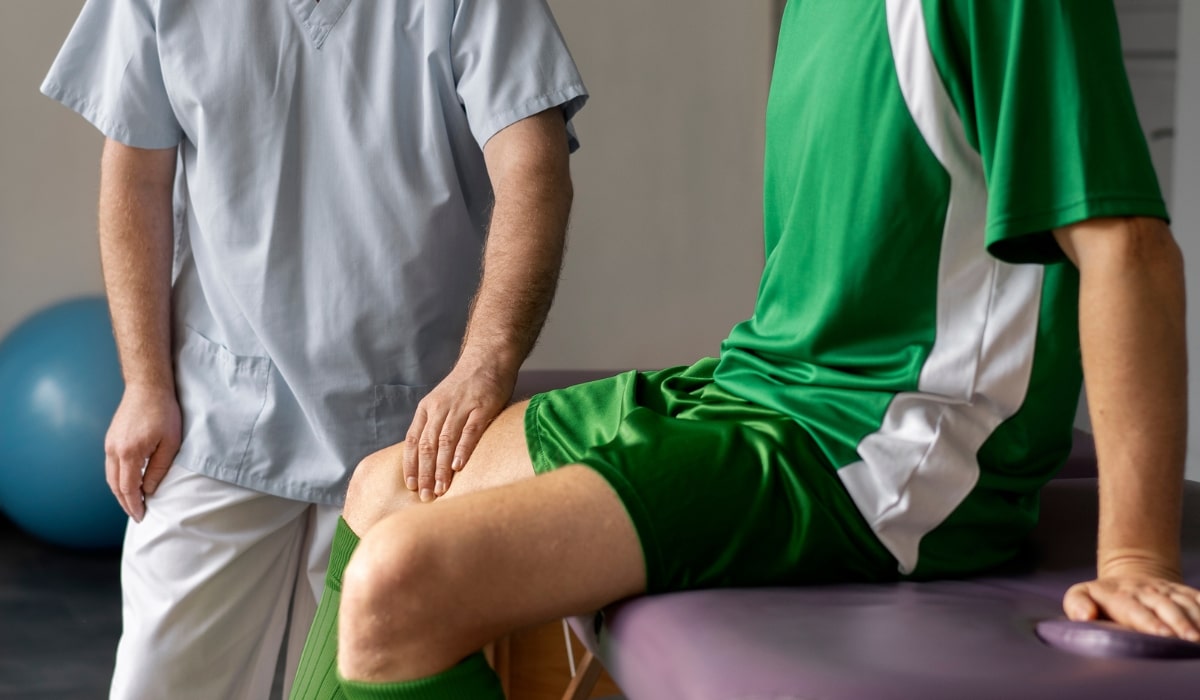Are you going through post-surgery recovery and looking for a way to regain your strength, mobility, and overall function? Look no further than SFMA (Selective Functional Movement Assessment) – the game-changing approach to post-surgery recovery.
Whether you’ve undergone a major operation or a minor procedure, SFMA can play a vital role in optimizing your rehabilitation process. At Pain and Performance Solutions, we specialize in providing top-notch SFMA services that will help you get back on your feet faster than ever before. So why wait? Contact us today and let us guide you towards a successful post-surgery recovery journey!
How SFMA Aids in Post-Surgery Recovery
After undergoing surgery, the road to recovery can be challenging. This is where Selective Functional Movement Assessment (SFMA) comes in. SFMA is a comprehensive movement assessment tool that helps identify and address movement dysfunctions.
During post-surgery recovery, it’s crucial to restore proper movement patterns and joint mobility in post-surgery to ensure optimal healing. SFMA allows healthcare professionals to evaluate seven fundamental movement patterns, including squatting, bending, lunging, twisting, reaching, stepping, and walking.
By assessing these movement patterns in post-surgery with SFMA techniques in mind, therapists can pinpoint any imbalances or limitations that may hinder recovery progress. Identifying these issues early on enables targeted interventions for improved outcomes.
SFMA also assists in creating personalized rehabilitation plans tailored to each patient’s specific needs. By addressing underlying dysfunction through corrective exercises and manual therapy techniques recommended by the assessment results of SFMA specialists at Pain and Performance Solutions can help optimize your post-surgery recovery journey.
Incorporating SFMA into your rehabilitation after surgery plan provides you with a roadmap towards better mobility restoration and functional mobility after surgery. With its evidence-based approach and focus on individualized care at Pain and Performance Solutions we are here to guide you every step of the way towards a successful recovery after surgery.

How SFMA Shows Issues Following Surgery
SFMA is a comprehensive system used by healthcare professionals to assess movement patterns in individuals. It identifies dysfunctions or imbalances that may be present, especially after surgery. SFMA consists of seven key movement patterns that are assessed to determine the root cause of pain or dysfunction.
The Seven SFMA Steps
- The first movement pattern is the cervical spine, which evaluates how well an individual can move their neck and head. This is crucial for post-surgery patients as it ensures proper alignment and range of motion.
- Next, we have the shoulder mobility pattern, which assesses the flexibility and stability of the shoulder joint. After surgery, it’s important to restore full range of motion and strength to prevent future issues.
- Moving down to the thoracic spine pattern, SFMA looks at how well an individual can rotate their upper back. This is essential for maintaining good posture and preventing strain on other areas of the body.
- The lumbar spine pattern focuses on assessing lower back movements. Post-surgery recovery often involves strengthening core muscles and improving stability in this region.
- Hip mobility is also evaluated through specific movements like squatting and lunging. Restoring proper hip function is vital for activities like walking or climbing stairs without pain or limitations.
- Knee-dominant patterns involve evaluating how well an individual can perform movements such as bending, squatting, or stepping forward with their knees leading the way. These movement assessment in post-surgery recovery help guide recovery exercises after knee surgeries.
- We have ankle dorsiflexion patterns that examine ankle flexibility during various movements like lunging or stepping forward. Improving ankle mobility plays a significant role in restoring balance and reducing strain on other joints during recovery.
Incorporating these seven movement patterns into your post-surgery rehabilitation plan using SFMA techniques lets you address specific dysfunctions or muscle imbalances in recovery effectively. This targeted approach allows for customized treatment strategies tailored to your needs!
The Importance of Proper Movement and Mobility in Recovery
Proper movement and mobility play a crucial role in the recovery process after surgery. When we undergo surgical procedures, our bodies can become weakened and experience limitations in motion. This is where the importance of focusing on movement and mobility comes into play.
Maintaining proper movement helps to prevent muscle atrophy, improve blood circulation, and reduce the risk of developing complications such as blood clots. It also aids in preventing joint stiffness and improves overall flexibility.
By incorporating exercises that promote mobility into your post-surgery rehabilitation plan, you can gradually regain strength, stability, and range of motion. These exercises may include gentle stretching routines tailored to your specific needs or targeted movements designed to activate specific muscle groups.
Additionally, proper movement techniques help restore balance throughout the body by addressing any compensation patterns after surgery or that were present from the initial injury. This ensures that each part of your body works harmoniously together so you can painlessly return to daily activities after surgery.
Working with a professional who utilizes SFMA for post-surgery recovery can provide personalized guidance based on your unique condition. They will assess your movement patterns using SFMA’s seven fundamental movements and develop an individualized program that targets areas requiring attention.
Incorporating SFMA into your rehabilitation plan allows you to identify any dysfunctional movement patterns early on so they can be addressed promptly before they lead to further complications or hinder progress in recovery.
At Pain and Performance Solutions, our team of experts is here to guide you through every step of your post-surgery recovery journey. We understand the significance of proper movement mechanics in achieving optimal results after surgery. Contact us today for SFMA services tailored specifically for your needs!

How to Incorporate SFMA into Your Post-Surgery Rehabilitation Plan
Incorporating SFMA in post-surgery recovery plans can be a game-changer when it comes to recovering effectively and efficiently. By analyzing the seven fundamental movement patterns, SFMA helps identify any dysfunctional movements or imbalances that may hinder your progress.
First and foremost, it is essential to consult with a qualified healthcare professional who specializes in SFMA. They will assess your specific needs and design a personalized rehabilitation plan tailored to your unique condition.
During the initial assessment, various functional movements such as squatting, lunging, bending, twisting, pushing, pulling, and walking are evaluated. This thorough analysis allows for a comprehensive understanding of how well each movement pattern is executed and whether there are any limitations or compensations present.
Based on the findings from your functional movement evaluation after surgery, targeted exercises and corrective strategies can be implemented into your rehabilitation program. These exercises aim to address any identified dysfunctions by improving mobility, stability, strength, and overall movement quality.
By incorporating SFMA into your post-surgery recovery plan, you:
- Specifically target areas that need attention.
- Ensure proper form during exercises.
- Prevent secondary injury in recovery.
- Enhance overall movement efficiency.
- Optimize recovery time.
Remember that every individual’s post-surgery recovery journey is unique; therefore, having expert guidance throughout this process is crucial. With Pain and Performance Solutions’ expertise in SFMA services combined with their commitment to helping clients achieve optimal results after surgery – you’ll have an invaluable partner by your side every step of the way!
Let Pain and Performance Solutions Be Your Post-Surgery Recovery Partner
When it comes to post-surgery recovery, having the right support and guidance can make all the difference. That’s where Pain and Performance Solutions comes in. With our expertise in SFMA (Selective Functional Movement Assessment), we are here to help you regain your mobility, strength, and overall well-being after surgery.
Our team of skilled professionals understands the unique challenges that come with recovering from surgery. We know that each individual is different, which is why we offer personalized treatment plans tailored to your specific needs. Whether you’ve had orthopedic surgery, joint replacement, or any other procedure, we have the knowledge and experience to guide you through every step of your recovery journey.
At Pain and Performance Solutions, our goal is not just to get you back on track but also to empower you with long-term strategies for maintaining optimal health beyond recovery. Our holistic approach combines hands-on manual therapy techniques with therapeutic exercises that promote stability, flexibility, strength training along with education about lifestyle modifications if necessary- all aimed at helping you achieve lasting results.
So why go through post-surgery recovery alone when you can have a dedicated partner by your side? Let Pain and Performance Solutions be there for you every step of the way. Contact us today for expert SFMA services and personalized support to help you recover effectively and regain your quality of life!

